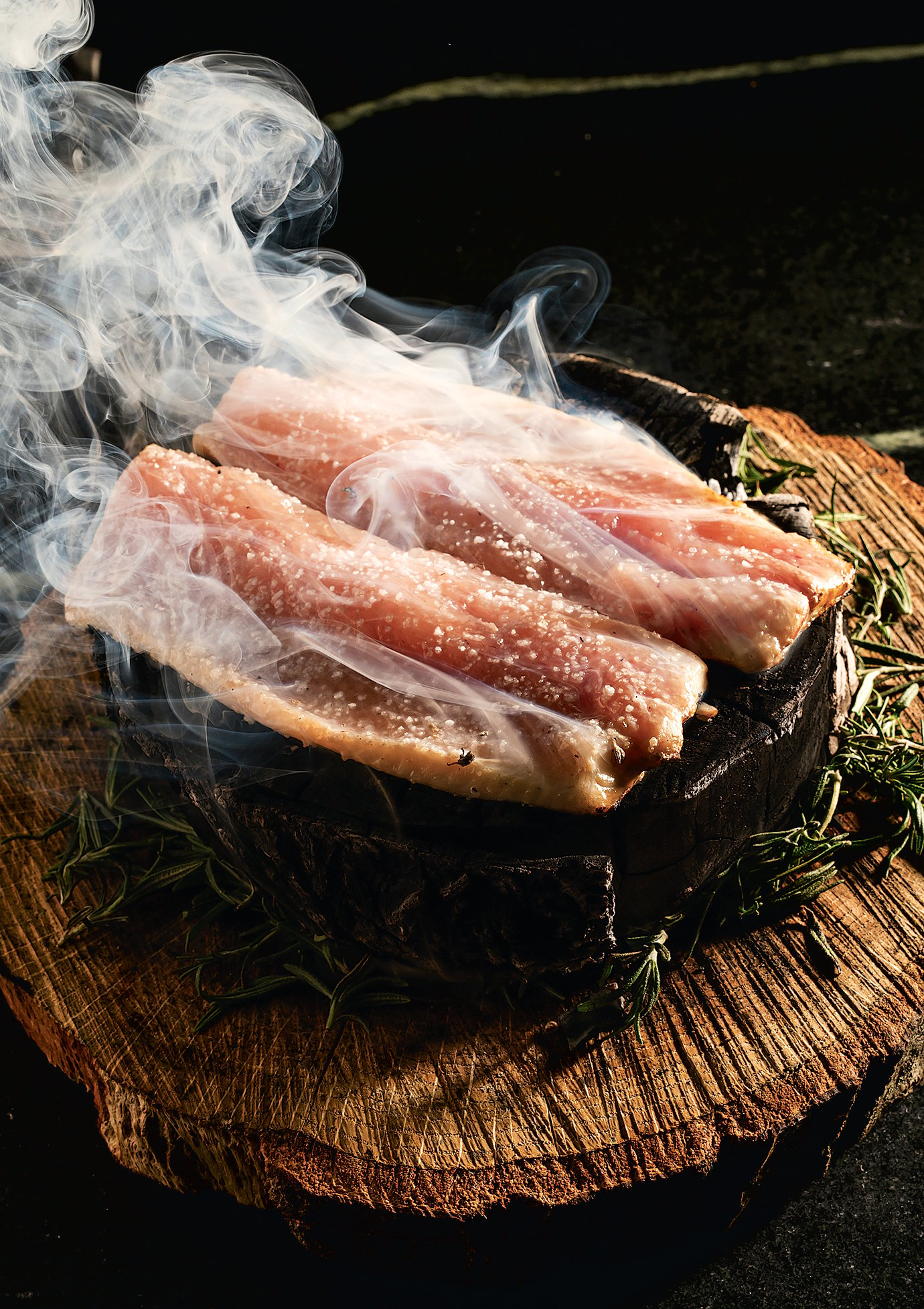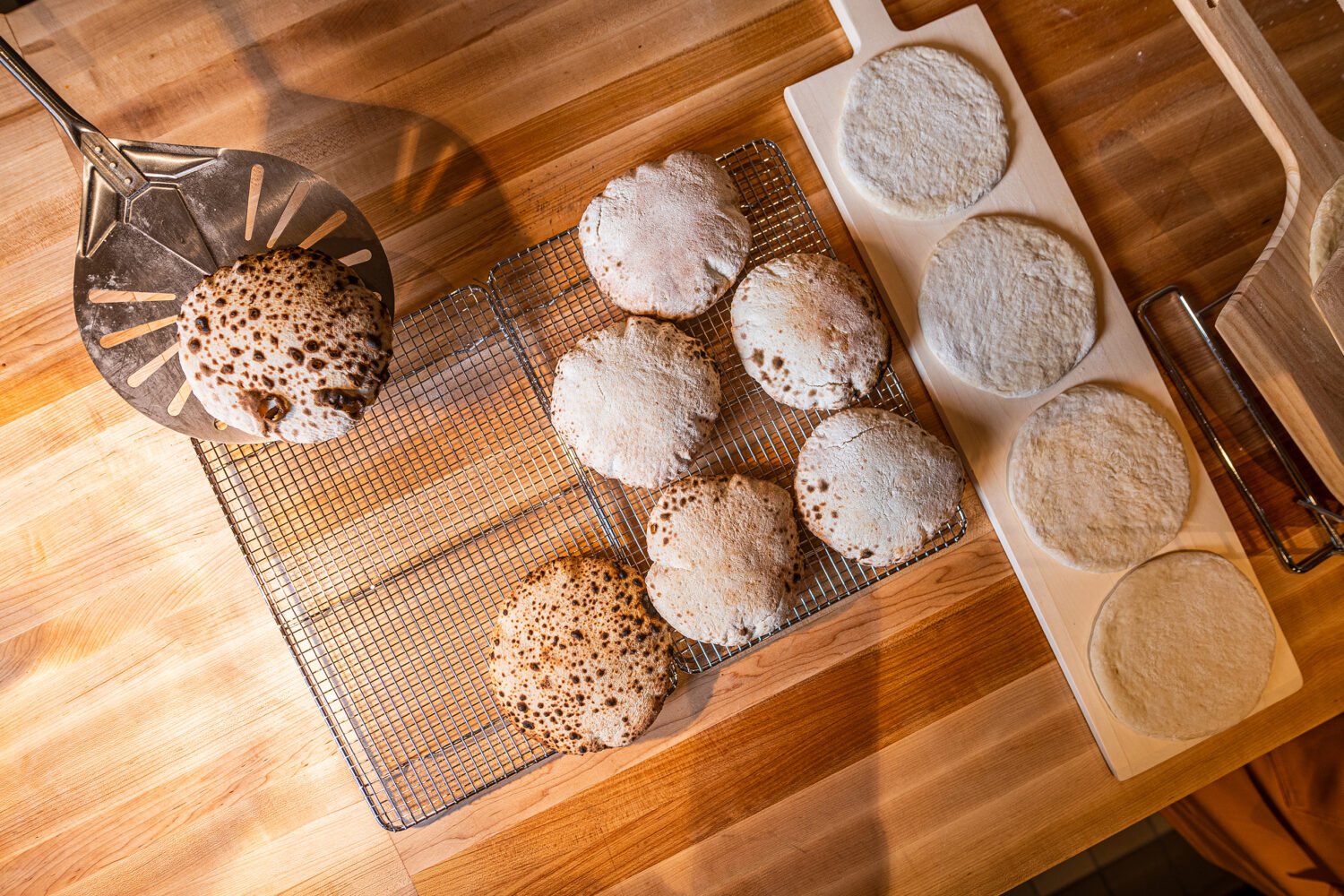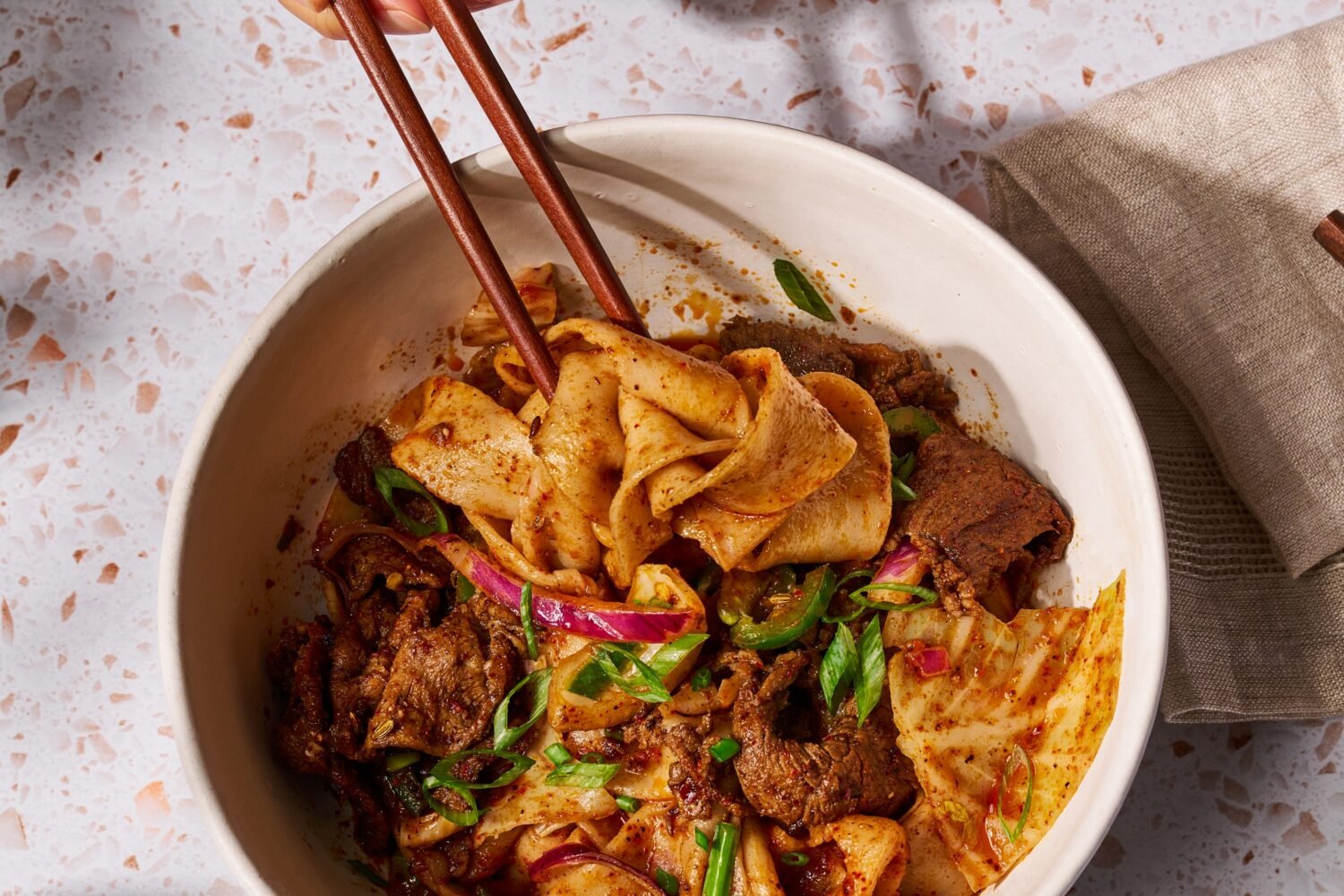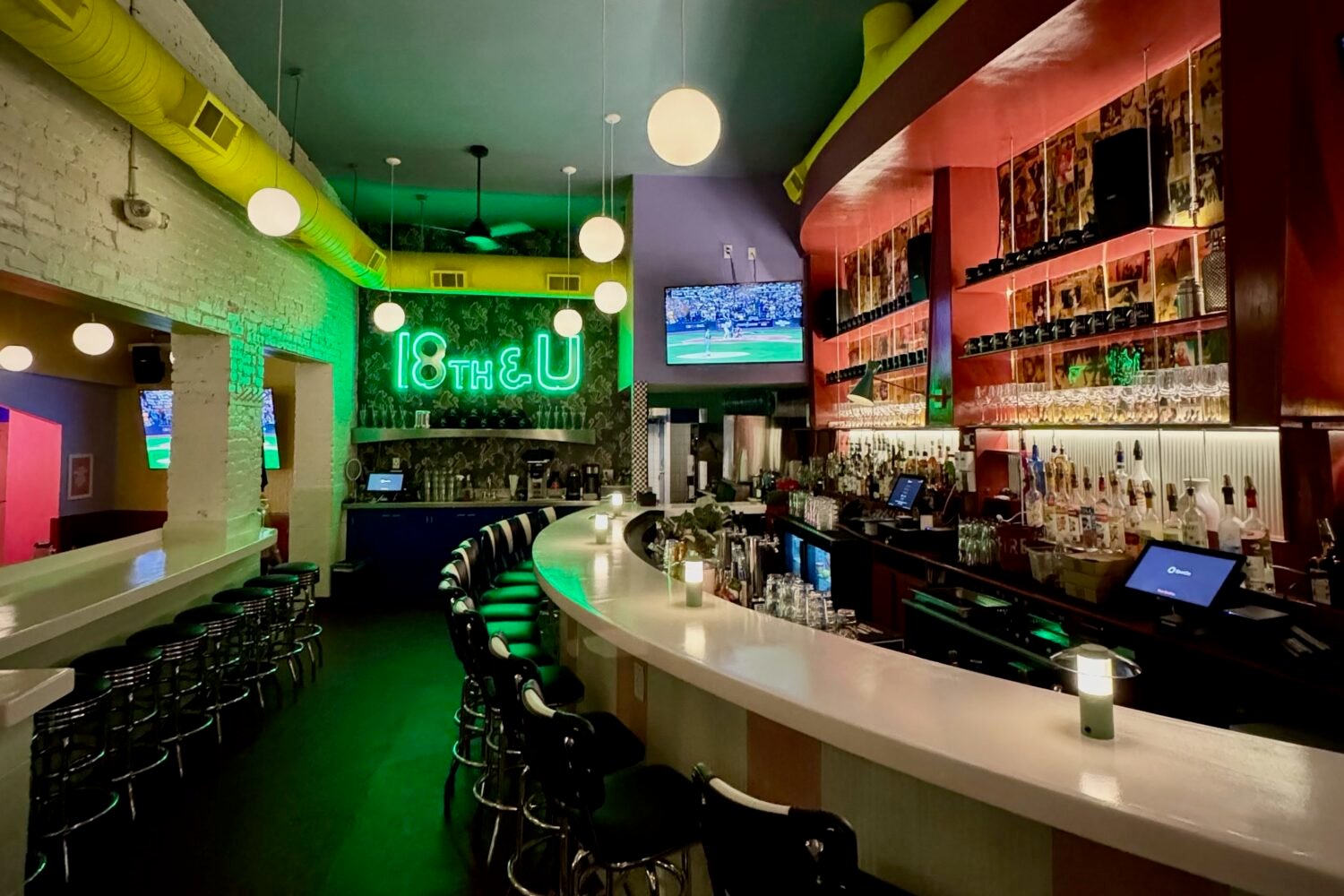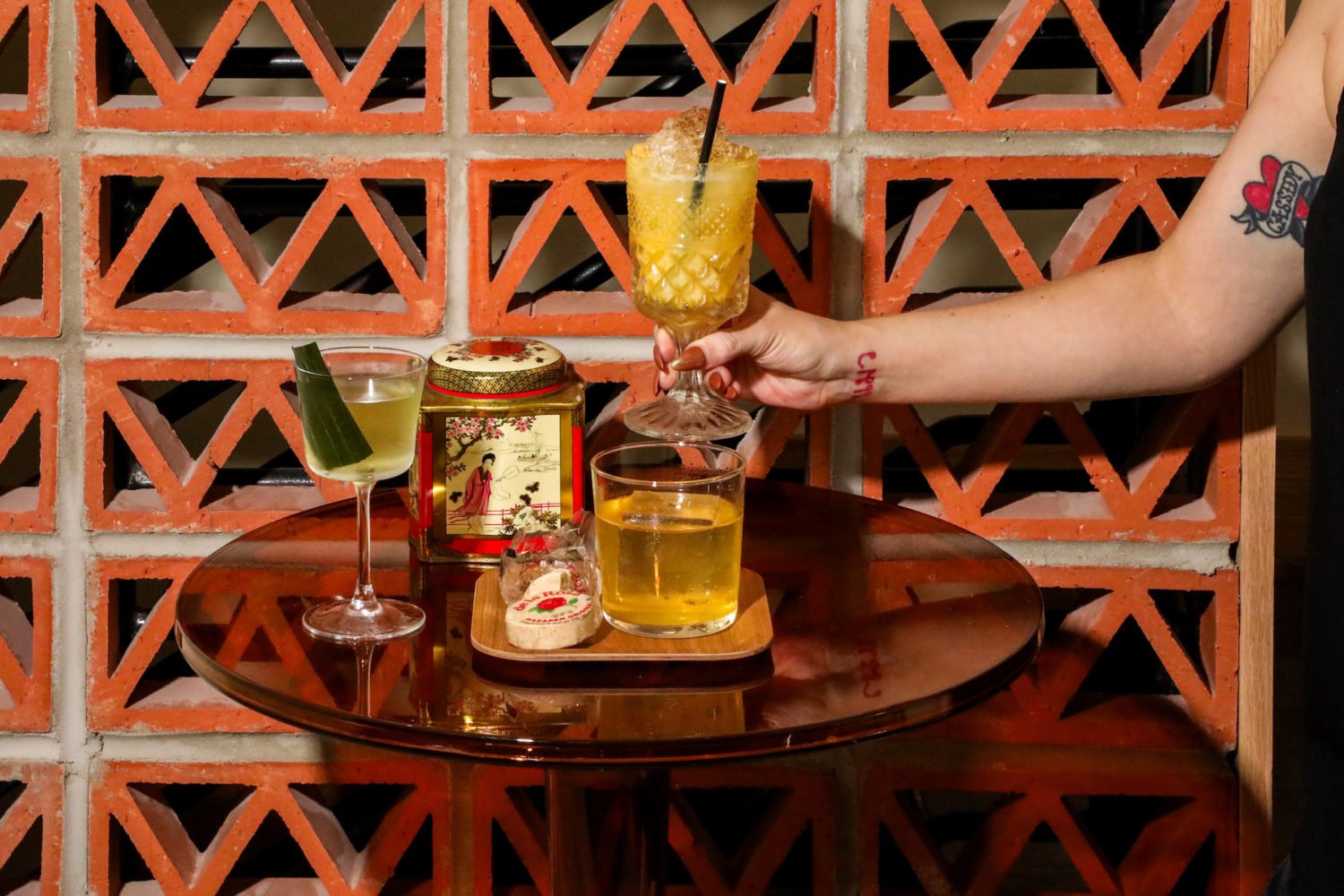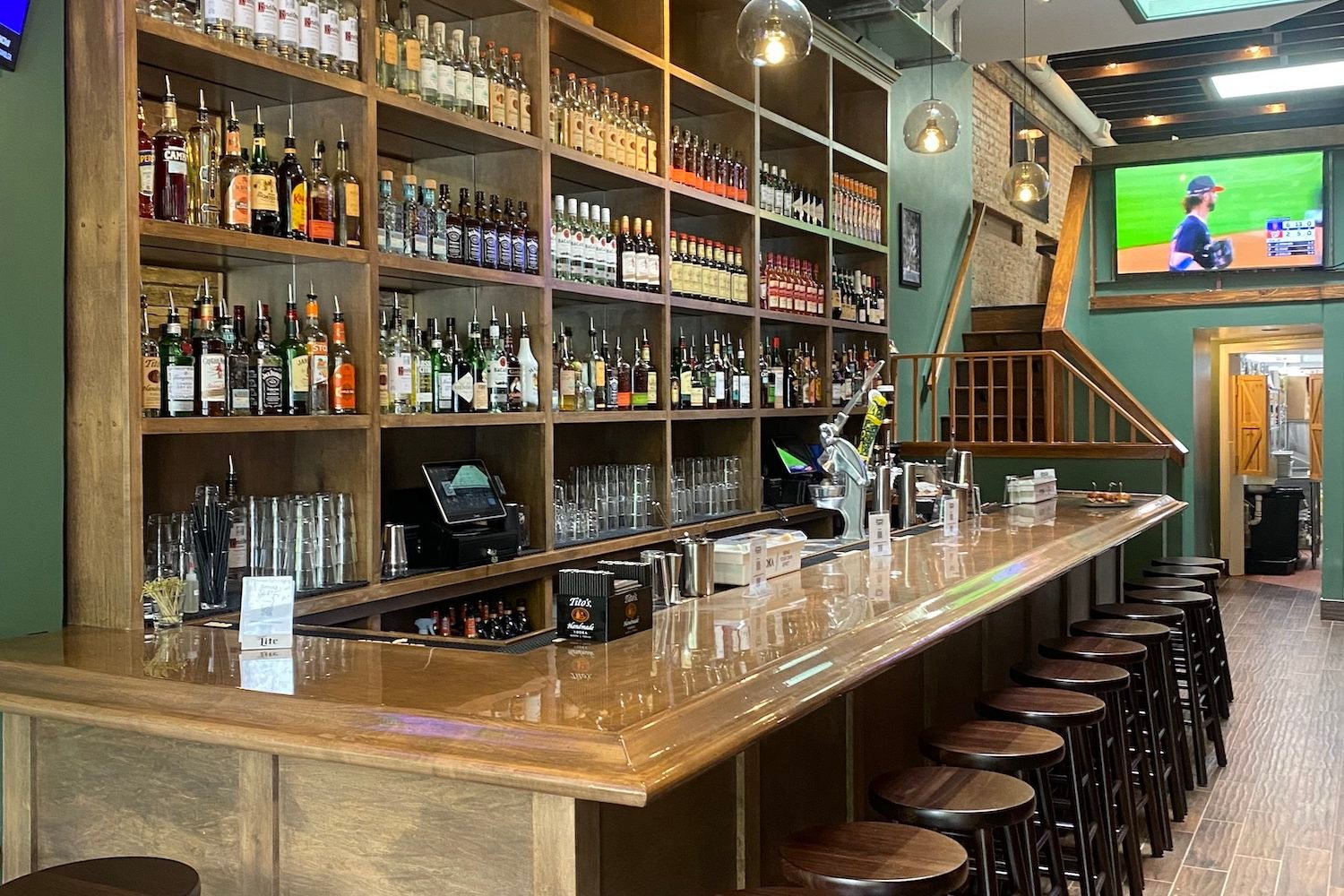The Line DC (1770 Euclid St., NW; 202-588-0525) might not be DC’s most luxurious hotel, but it’s unquestionably the coolest. Heard of the NoMad in New York? Same people. Set in an obsessively preserved, century-old former Adams Morgan church, the Line is outfitted with a glassed-in radio studio, guest rooms filled with leafy plants and local art, and three restaurants. Here’s the lowdown on where to eat.
Brothers and Sisters
Erik Bruner-Yang, the beanie-wearing chef/restaurateur behind H Street’s Maketto, is the force behind this all-day lobby restaurant. It was the first dining spot to open here, with an ambitious, well-executed cocktail program overseen by Todd Thrasher (PX) and a stunning lineup of cakes by star New York–transplant pastry chef Pichet Ong.
If you ate at Brothers and Sisters in its earliest days and were as underwhelmed as I was, give the place another look. Bruner-Yang has both tightened the menu and improved it, ditching dishes that epitomized overpriced hotel food (a $19 shrimp cocktail, with two crustaceans split to look like four) and the silly practice of having it read back to front.
If you ordered the double cheeseburger in February, you were met with the kind of dried-out patty you might encounter on a room-service tray. A few months later, the dish has morphed into one of the area’s better versions, with a moist short-rib patty and Mornay sauce (that’s French for creamy, Gruyère-y deliciousness). The McDonald’s-skinny fries, sprinkled with nori, are just as terrific.
The best dishes show off Bruner-Yang’s knack for conjuring electric flavors no matter what idiom he’s working in, whether chewy knife-cut noodles with pork sausage (a dish that’d fit right in at Maketto); a simple plate of Burgundian ham with cornichons and grain-mustard sauce; ricotta-filled agnolotti with robust lamb ragu; or the octopus-dog drizzled with crème fraîche. The few duds—I’m looking at you, overcooked ocean trout and bland Brussels sprouts—aren’t bombs, but they lack that kind of spark.
You can certainly do the three-course-dinner thing here, but Brothers and Sisters is best suited for something less formal—a few cocktails and snacks, a bite after a long day, or a late stop-in for Ong’s splendid cakes. Expensive.

Spoken English
The restaurant that has drawn the most furrowed brows from friends is this one, another Erik Bruner-Yang joint, which opened in April. You’re going to be standing? At a communal table? In a kitchen? All true. I was skeptical as well. But throw on some weekend shoes—it’s worth it.
First-timers might have a hard time finding the unmarked place, styled as a sort of culinary speakeasy. Look for the custom-designed red wallpaper to the right of the hotel’s check-in desk, then wait for someone to come seat you (and hope you don’t knock into a food-runner). But once you’ve secured your place at one of two heavy marble counters, you’ll find servers to be familiar and friendly, proffering gratis barley tea and nudging you to try things such as a rice cake steamed in pig’s blood. The crimson Taiwanese street snack practically explodes with flavor—mostly sweet, slightly iron-tinged, and spooned with crushed peanuts and cilantro. It’s far tastier than the rice-filled fried-chicken-skin dumpling, the plate everyone is snapping photos of.
Much of the menu is meant for quick grazing. There’s a category of kushiyaki —few-bite skewers of, say, sweetly glazed trumpet mushrooms, a wedge of warm Camembert with honey, or luscious short rib with anchovy—that come out at a fast clip. Or go for the yakitori, which our server billed as “eight courses of chicken in 15 minutes.” It starts with soy-glazed thigh meat and a piece of toast slicked with liver mousse and ends with a dreamy, full-bodied chicken broth. I preferred these skewered snacks over many of the small plates, such as a single prawn with shavings of salted-egg yolk (the innards from the shrimp’s heads are drizzled over the body) or a clash of white asparagus with white chocolate. The exception: a puffy pancake crowned with seaweed jam and osetra caviar.
But the trophy dish that makes Spoken English a must-visit is the whole roast duck. The $98 feast—it could easily feed four, or you could just take home a ton of leftovers—comes with a platter of fat-lined meat sided with fresh duck-fat tortillas and a fusillade of accompaniments, from traditional hoisin and cukes to crumbles of fried duck skin. If anything is deserving of aching feet, it’s this. Moderate.
A Rake’s Progress
Baltimore’s Woodberry Kitchen is known as much for its soaring old-mill setting as it is for its hyper-local roasts and small plates. So it goes at chef/owner Spike Gjerde’s first DC restaurant, on the Line’s second floor. If there’s a more beautiful indoor space in which to experience twilight, I haven’t found it. As the sun sets, the original stained-glass windows take on the colors of one of Monet’s “Haystacks” paintings.
But it’s not only the church’s bones that make the restaurant feel so pious. You sense it from the moment you open the wax-sealed menu: “day eighty-three,” it read in one corner on my last visit; there was also a verse of poetry.
Gjerde has long made it his aim to celebrate the bounty of the Mid-Atlantic. His partner, Corey Polyoka, extends the mission to the elaborate cocktail menu, filled with local spirits, sipping rums, fresh herbs, and house-made sodas and switchels.
Despite lovely—and lovingly handled—ingredients, some of the cooking needs fine-tuning. A $65 roast chicken, cooked in the hearth, would feel right at home, well, at home. We barely touched a filet of off-tasting rockfish, which the waiter then whisked away without comment. (The smoky trout, sizzling on a slab of wood and sided with addictive brown-butter hollandaise, is a far better bet). A carbonara on the bar menu, made with rye pasta, had an unpleasant bitterness. Meanwhile, a bar snack of deviled ham was undone by too heavy a hand with the salt shaker.
Many of the most memorable plates have been appetizers: robust bacon and greens; a trio of hams from which you fashion DIY sweet-potato-biscuit sandwiches; toast topped with cool Green Goddess–tossed lobster; or a fried quail (claw on, obviously) dabbed with gochujang. And I had a hard time putting down the bar’s fried-rabbit sandwich, Gjerde’s answer to the Southern-style fried-chicken-and-pickle sandos that are everywhere lately.
The best way to close out dinner here is not with the Maryland confection you’d expect, the Smith Island Cake (it’s too sweet), but with peach-jam-paved linzertorte or a miniature baked Alaska. No surprise—the latter is set aflame with a long, tapered candle. Very expensive.

This article appeared in the June 2018 issue of Washingtonian.

